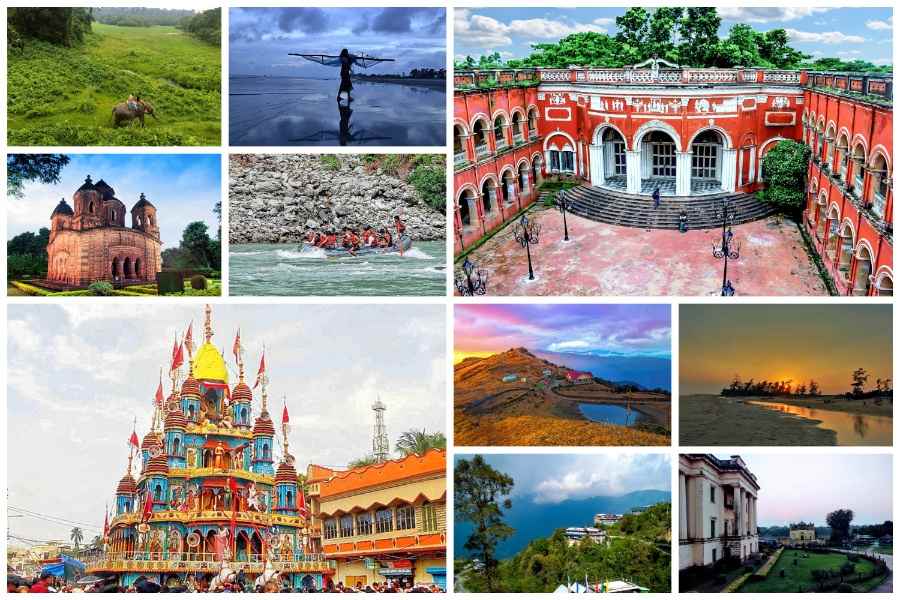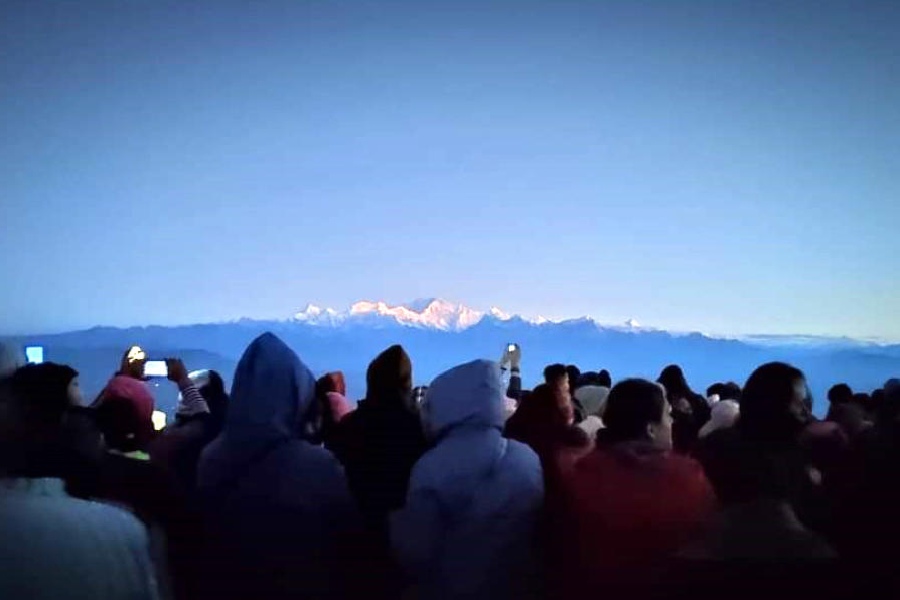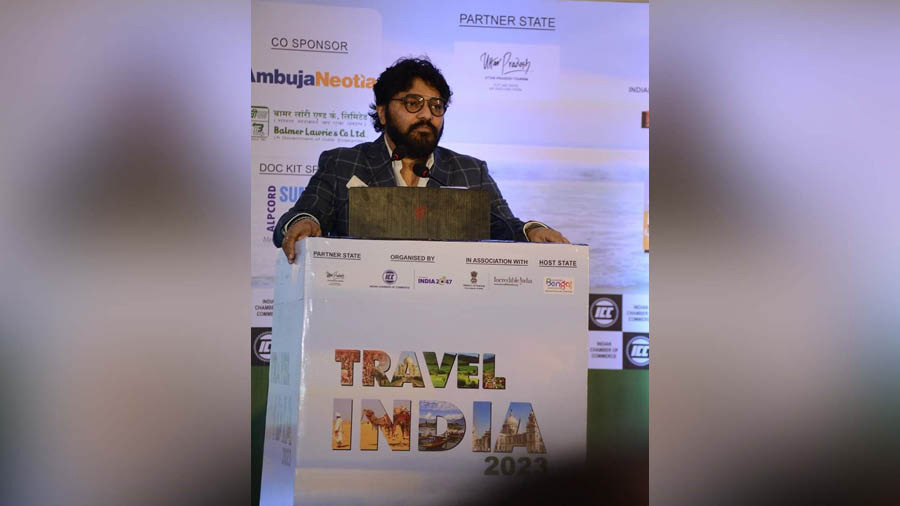Satyajit Ray’s tuneless singer Goopy and his rhythmless drummer Bagha are granted three wishes by the king of ghosts. They are musicians, albeit failed musicians, so it is not unexpected that they should wish for the gift of melody. Poverty has been their constant context, so it is natural that they should wish for food and clothes. But it is their wish to be able to travel that comes as a surprise. Amader desh berabar boro sokh, Rajamoshai, says Goopy grinning from ear to ear. Having been granted their heart’s desire, how-ever, the two only clap their way in and out of Jhundi, Hundi and Shundi. And why not? Until about the last decade of the 20th century, Bengal had only two holiday destinations worth the mention.
There were Darjeeling and Digha. The first has been a favoured destination from the colonial era — the East India Company acquired it from the Raja of Sikkim for its salubrious climate and the British built summer homes there. Digha was a post-Independence addition.
By the first decade of this century, one heard of Calcuttans spending spring or long winter weekends in Santiniketan and travelling to Murshidabad for a glimpse of history — the Hazarduari Museum there was inaugurated in the 1980s. Puri remained the generational favourite, but people had started exploring beaches within Bengal — Bakkhali, Shankarpur and Mandarmani. The last popularised in these parts the concept of resorts.
Then came Lataguri — once a logging town, now a thriving resort town — which the Bengal government developed about two decades ago as the centre of tourism for the Dooars reserve forests. And suddenly it became acceptable to spend a weekend in the Sunderbans with its basic accommodations, long launch trips, sun-bathing crocodiles and elusive tigers.
Today, the scene is even more altered. Travel sites advertise any-thing between 42 and 48 popular tourist destinations within Bengal. Of course, some of them are cities such as Siliguri, Midnapore, Durgapur and Asansol that one is well acquainted with, but the list also includes little-known places such as Rajabhatkhawa, Mukutmanipur, Rishyap and Kamarpukur. Kamarpukur is the birthplace of saint-philosopher Ramakrishna Paramhansa and one of the major centres for religious tourism alongside Tarapith, Tarakeshwar, Mayapur and Calcutta, of course, with its temples at Kalighat and Dakshineswar. Then there is the historical tourismcircuit that includes Gaur, Pandua, Cossimbazar, Baranagar,Berhampore and Murshidabad. There are the terra-cotta temples of Bishnupur, Ambika Kalna in Burdwan district, Banda Deul in Purulia and Surul in Birbhum.
That apart, you can go rafting in the Teesta (at Teesta Bazaar), camping on Henry’s Island and Mousuni, and rock climbing in the Purulia hills. Tea tourism is also a thing in Fagu, Mim, Taljhora, Chel and Lava in Kalimpong and Darjeeling districts.
“Most of these places, whether scenic or historical, have always existed,” says Faruque Abdullah, who teaches history at S.C.B.C. College in Murshidabad and has a penchant for travelling to little-known places of historical interest. “It is just that most people were unaware of them. And it was also difficult to travel to many of these places,” adds Abdullah who is part of a group that documents travel experiences on the website jathaichchatathaja.com, Bengali for “go wherever you wish”.
Travel blogger Rangan Dutta believes this ability to go anywhere you wish — thanks to good roads and vehicle ownership — is also a reason the dots on the tourist map of West Bengal have increased exponentially. Biker Dhrubo Roy agrees, “You don’t have to depend on public transport. Plus the journey is comfortable because there are enough rest stops along the highways.”
The more people travel to acertain place, the more hotels, lodges, homestays and whatnot it sprouts. Take the case of Santiniketan. It went from one tourist lodge and a handful of hotels at the fag end of the 1990s to four pages of properties on Booking.com and 99 places on AirB&B!
And while Santiniketan is mushrooming homestays and farmstays, mansions in Panchetgarh, Nimo and Azimgunj have shrugged years of oblivion, submitted to a little facelift, and opened their doors to visitors. So there is Rajbari Bawali near Calcutta, Balakhana in Nabadwip, Cossimbazar Chhoto Rajbari in Berhampore, Itachuna Rajbari in Khanyan, Mahishadal Rajbari in East Midnapore. There’s also Ahmadpur Baithakkhana near Burdwan, Jhargram Rajbari in Jhargram, Salboni Rajbari in West Midnapore, Ayodhya Pahar Bungalow in Purulia and so on.
Rohit Sengupta recently took his parents for a vacation to Bari Kothi near Murshidabad. “It is not just a place to stay but an experience,” says the 30-year-old lawyer.
Abdullah lays much of the credit for this exponential increase in tourist spots at the door of social media. “People would not have got to know about these places if it weren’t for YouTube and Instagram reels,” he says. Incidentally, #travel has been used on Instagram 68 crore 54 lakh times while #travelphotography has been used 21 crore 14 lakh times. And if you throw a toffee into a crowd anywhere, you are likely to hit a travel vlogger. “Everyone and their aunt is uploading videos on YouTube of places they have visited, be it on vacation or just that afternoon. While the quality is questionable, this is a great way of spreading news of places that are only known locally,” says Dutta. He points out, “Online booking has also made the logistics easy.”
“You get jungle, river and ruins at Garpanchakot,” says Tumpa Das, who loves taking short trips with her family to rejuvenate. Garpanchakot near Damodar river is about the beauty of deciduous forests, flowing rivers and green fields. Other such scenic places by the river would be Taki by the Ichamati, Gopiballavpur beside the Subarnarekha and Baranti by Baranti lake. You get a 16th-century Vaishnavite temple, terracotta tombs of Vaishnav mahants,lotus-filled ponds, ruins of an indigo factory and an easier way of life in Gopiballavpur. You get a glimpse of Bangladesh, old zamindar mansions and gamchhas aplenty at Taki.
Says Sankha Chowdhury, one of the four owners of a travel company that holds multiple properties in Santiniketan, the Dooars region as well as in Darjeeling and Kalimpong districts, “Now you can visit Lataguri, Jayanti, Chilapata or Jaldapara (all in the Dooars area with its chunk of reserve forests) if you want to see forests and wild animals, Pedong or Rishyap if you want a quiet time with the mountains, Sittong if you want orange groves...”
So, where are you headed this summer? The answer better not be Hundi, Jhundi or Shundi.













